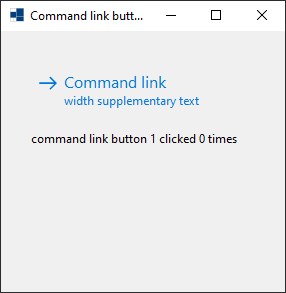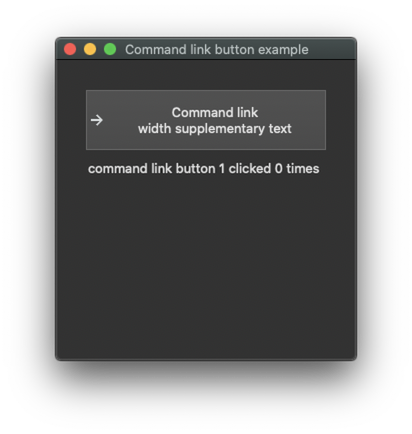The following code example demonstrate the use of command link button control.
#include <xtd/xtd>
namespace examples {
class form1 :
public form {
public:
form1() {
text("Command link button example");
client_size({300, 300});
command_link_button1.parent(*this);
command_link_button1.texts("Command link", "width supplementary text");
command_link_button1.location({30, 30});
command_link_button1.size({240, 60});
command_link_button1.click += [&] {
label1.text(ustring::format("command link button 1 clicked {} times", ++command_link_button1_clicked));
};
label1.parent(*this);
label1.auto_size(true);
label1.text("command link button 1 clicked 0 times");
label1.location({30, 100});
}
private:
int command_link_button1_clicked = 0;
};
}
int main() {
application::enable_button_images();
application::run(examples::form1());
}
The xtd namespace contains all fundamental classes to access Hardware, Os, System,...
Definition: system_report.h:17







